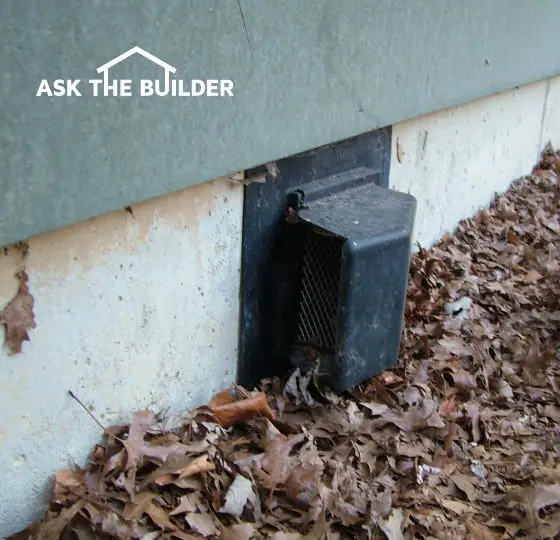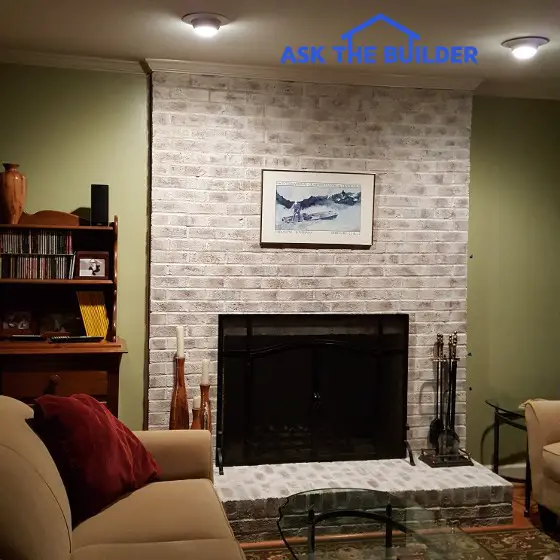Second Fireplace Smokes

This is a combustion air intake for a fireplace of my own. I had just enough room to install it but was forced to rotate the intake sideways. I check the intake regularly to ensure it is not clogged by leaves and other debris.
DEAR TIM: I have a house built in the 1950's that has two fireplaces, one in the living room and one directly underneath it in the finished basement. They both share the same chimney. My problem is when I light a fire in the living room, smoke comes out the fireplace opening in the basement, even if the basement damper is closed. The reverse also happens. The only way I've found to stop this is to have fires going in both locations, but that's pretty impractical. Is this a common problem with this kind of construction? Do you have any ideas how to fix this? Rich Wilson, Cincinnati, OH
DEAR RICH: Your description of events makes me believe the fireplaces are starved for combustion air. If you could go back in time and talk with the original owners of the house I would be willing to bet you a dinner at The Precinct that the fireplaces didn't smoke. In the past 50 years, it is my guess that upgrades to the windows and doors of this house have blocked many of the air pathways that supplied the house with the needed combustion air.
Fireplaces consume vast amounts of air
The residential building codes back in the 1950's did not address combustion air for fireplaces or fuel burning appliances, such as furnaces or water heaters. But they do now, since houses are built so much tighter. Fireplaces, furnaces, water heaters and any other device that consumes air to burn a fuel can consume vast amounts of air. Just look at the top of a chimney that has a roaring fire in it. When you see a smoke plume chugging from the chimney top, an equal amount of air must be flowing into the house to offset what you see going up into the air.
What is back drafting?
Your situation is possibly quite dangerous. The back drafting you are experiencing may also happen when your furnace operates. The air needed by a fire or your furnace, or water heater, is going to come back into the home through the path of least resistance. When you start a fire in one or both of the fireplaces, the air needed for combustion may come back down the furnace or water heater flue as these appliances operate. If this happens, you are sucking vast amounts of carbon monoxide into your home.
How can you test for back drafting?
You can prove this back drafting theory of mine quite easily. I would start a fire in the living room fireplace and have someone watch the basement fireplace. As soon as smoke starts to issue from the basement fireplace, have a person open all of the windows in the living room. As soon as the windows are opened, the smoke should stop coming in the basement fireplace as the living room fireplace can obtain all of the air it needs from the nearby windows.
I would hire an experienced bricklayer, who builds masonry fireplaces, and have him see if he could safely install a combustion air kit from the back of the living room fireplace combustion chamber to the exterior wall of the fireplace. It may not be as hard as you might think. A single brick on the exterior of the house and one of the firebrick inside the combustion chamber will have to be sacrificed. But if you hire a pro, the cast iron or cast aluminum vents he installs in place of each brick will look like original equipment installed by the 1950's bricklayer.
CLICK or TAP HERE to get FREE QUOTES from local companies to check your fireplace.
The basement fireplace is going to be the challenge. It may be nearly impossible to add combustion air inside the combustion chamber unless the back of this fireplace is visible. This is not uncommon as many basements in Cincinnati are built on hillsides and one wall and parts of others are partially exposed at grade level.

Your only option may be to provide the needed combustion air via a 4-inch metal pipe that extends from the outside of your home to a point very close to the basement fireplace combustion chamber. If this fireplace is in the center of your basement, you may be able to pipe the air into the back of the fireplace. I would be sure to consult with the building department and your local fire inspectors to ensure the installations of the air vents for both fireplaces meet modern codes and are safe.
Column N7